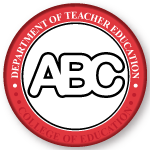Author ORCID Identifier
Jakopovic - https://orcid.org/0000-0002-9554-9201
Document Type
Conference Proceeding
Publication Date
10-2020
Abstract
The United States faces a continuing shortage of well-prepared secondary mathematics teachers, among the worst of any subject (Malkus, Hoyer, & Sparks, 2015). To address this issue, schools often rely on both inservice professional development, which not all teachers may opt to participate in, as well as initial teacher preparation programs, to recruit and retain highly qualified teachers. The quality of teacher preparation, particularly related to pedagogical practice, significantly impacts new teacher attrition (Ingersoll, Merrill, & May, 2014). Studies find that 50% of all teachers leave the profession within the first five years (Foster, 2010), and the rate of departure for mathematics teachers is highest in high-poverty schools (e.g., Goldring, Taie, & Riddles, 2014). According to the Learning Policy Institute, 40% of newly hired mathematics or science teachers are underprepared, and underprepared teachers are far more likely to teach in schools serving students of color and low-income students (Carver-Thomas, 2018). These studies speak to the urgency of both training highly qualified mathematics teachers and providing ongoing support during their induction years to ensure new teachers find the success and job satisfaction needed to retain them in the profession. The Secondary Teacher Recruitment and Induction in Diverse Educational Settings (STRIDES) RAC members strive to create a sustainable and cohesive system of professional support (from pre-service through early years in the profession) to retain high-quality secondary mathematics teachers in the field. This report highlights the current work of the STRIDES team to develop timely interventions and supports through which to meet this goal.
Recommended Citation
Amick, Lisa; Martinez, James; and Jakopovic, Paula M., "Supporting Teacher Retention in Diverse Educational Settings (STRIDES)" (2020). Teacher Education Faculty Proceedings & Presentations. 38.
https://digitalcommons.unomaha.edu/tedfacproc/38


Comments
Articles published in the Proceedings are copyrighted by the author. Permission to reproduce an article or portions from an article must be obtained from the author.
This was presented at the Ninth Annual Mathematics Teacher Education Partnership Conference and appears in their proceedings (2020 ed., pp. 37-41)